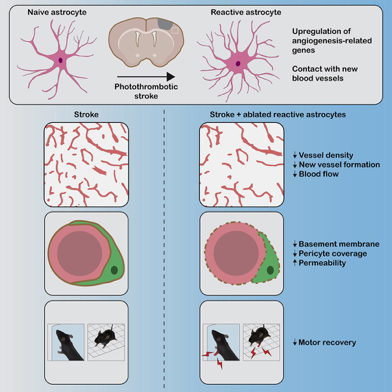UT-Austin researchers find new potential to repair blood vessels after stroke
May 6, 2021
Certain common nervous system cells can change their function to facilitate blood vessel repair and recovery after a stroke, potentially paving the way for new brain injury treatments, according to an April 27 study by UT researchers.
Astrocytes, star-shaped cells found in the nervous system, help maintain processes such as providing nutrients to neurons, but these cells pivot to managing blood flow after people experience a stroke, said Michael Williamson, the main author of the study.
“These astrocytes are changing their function in a way that allows them to support some of these blood vessels that became damaged due to the stroke,” neuroscience graduate student Williamson said. “It seems astrocytes might also provide some factors that facilitate the growth and survival of new vessels.”
Biomedical engineering professor Andrew Dunn said these studies are the first step to creating new types of treatments that can enhance the repair of blood vessels in stroke or brain injury patients.
“If we can boost these responses, we might be able to improve recovery of people that have strokes or other types of brain injuries,” Williamson said.
The scientists introduced dyed clots into the brain of mice to induce a stroke, which revealed the astrocytes making repairs to blood vessels, Dunn said. Psychology professor Theresa Jones said scientists used mice models because they share similar stroke reactions to humans.
“Mice have impairments in our stroke models that resemble humans,” Jones said. “Loss of function in one hand and arm is a prevalent lasting disability in mice as well as rats because they use their forepaws like hands. As a result, we can sensitively measure function that is similar to humans and how it’s affected by stroke in mice.”
Williamson said he plans to continue working on astrocyte research to examine other ways the cells may help repair processes.
“The astrocytes are very dynamic cells,” Dunn said. “They have a way of sensing something like an injury. And that’s one of the things we captured is the way in which the astrocytes responded to vascular injury.”



